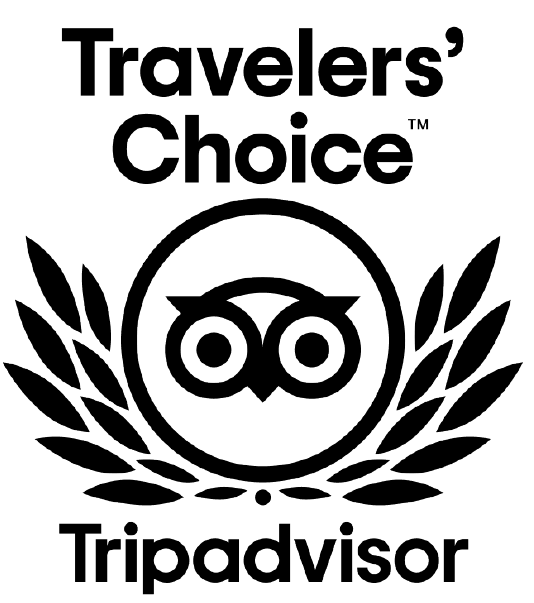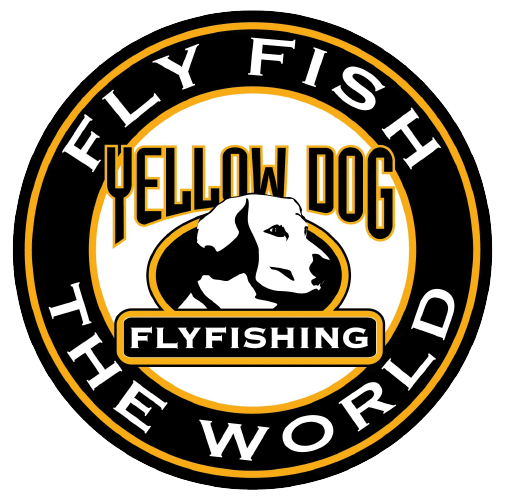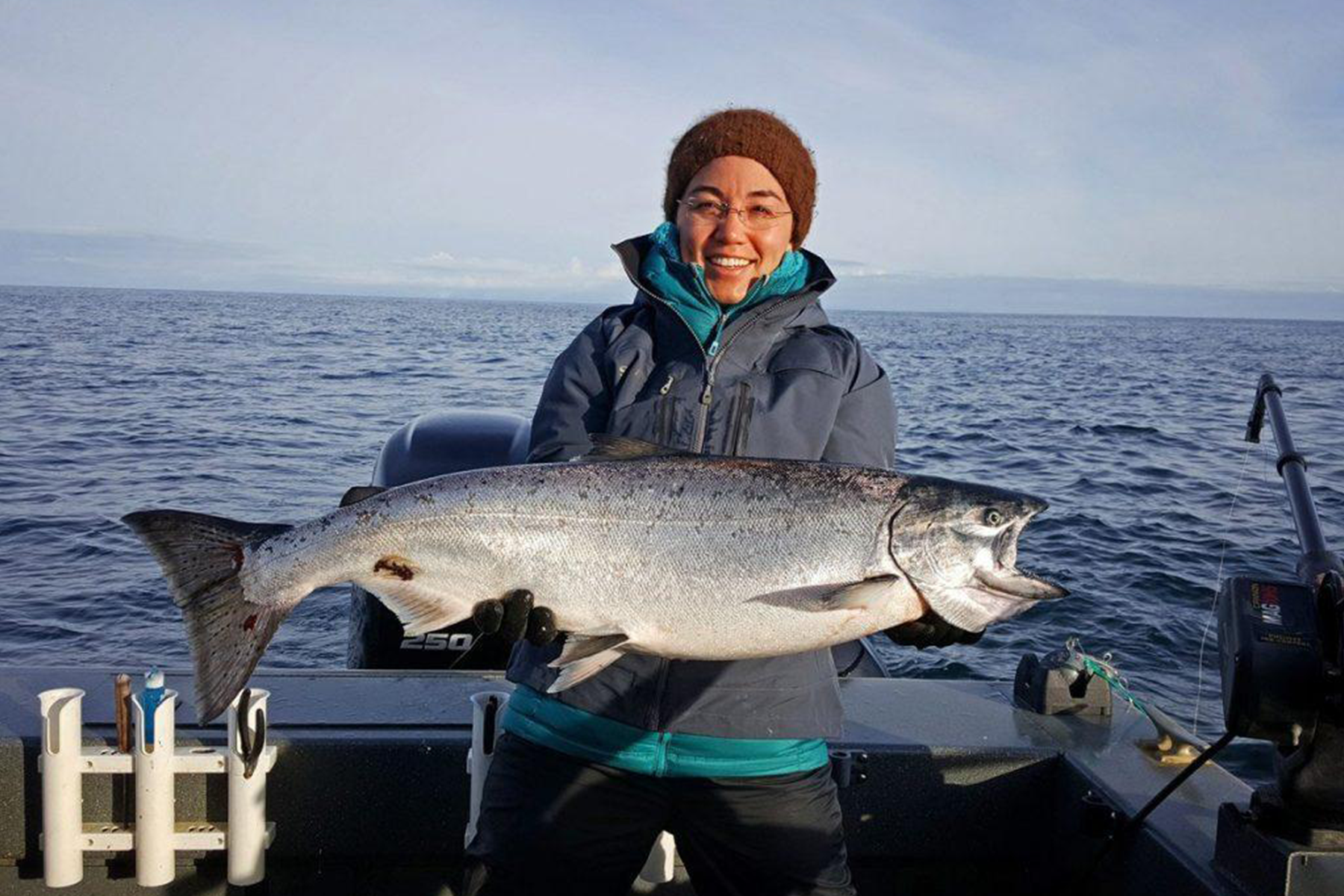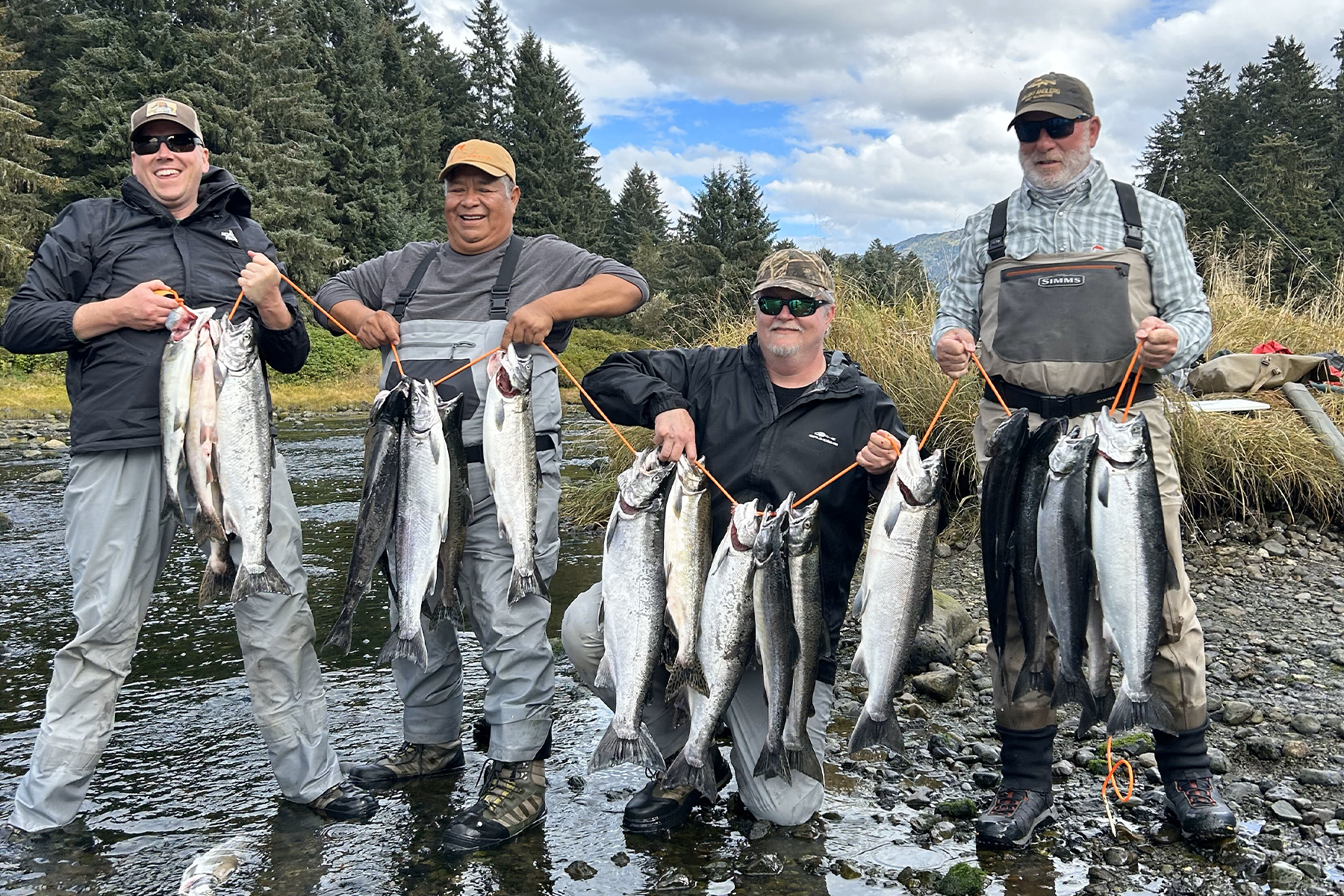Alaska Sockeye Salmon Fact Sheet


Names
Sockeye Salmon Common Name: SockeyeScientific Name: Oncorhynchus tshawytschaOther Names: Red Salmon or BluebackSockeye Salmon Description
Color & Markings:Seagoing Sockeye (and those that have recently entered rivers to spawn), have iridescent silvery sides and a white belly. Their backs are a metallic blue-green color. They may have fine, black speckling on their back, but they do not have large distinct spots. As the fish progress farther upriver, they turn bright red (hence their common name “Red”) and develop bright green heads. Males develop a hump-back and hooked jaws.Size:Average 8-12lbs at maturityDistinguishing Features:- Salt Morphology: Dark blue-black back. No distinct spots on the back, dorsal fin or tail.
- Spawning Colors: Brick Red to scarlet colored body with dull green head.
Salmon Fishing
Book your Salmon Fishing Trip now!Sockeye Life Cycle
 Spawning:Sockeye spawn in freshwater drainage systems that contain one or more lakes.Rearing:In Alaska, Sockeye salmon eggs hatch in the winter. In the spring, fry emerge from the gravel beds and move to rearing areas where they spend 1-3 years as parr before undergoing smoltification and moving to the ocean.Maturation:Sockeye salmon spend 1-3 years in the ocean feeding and growing rapidly. In Alaska, Sockeye salmon drift counter clock-wise around the Gulf Alaska with the prevailing current. Once they reach maturity, they swim the thousands of miles back to their natal water sheds.Sockeye return to spawned between June and early August. Each river usually has only one run of Sockeye Salmon, but a few rivers may have two runs (i.e. If there are multiple tributary drainages, the lower portion of the river may experience two distinct runs).As with all Pacific Salmon, Sockeye spawn once and then die.
Spawning:Sockeye spawn in freshwater drainage systems that contain one or more lakes.Rearing:In Alaska, Sockeye salmon eggs hatch in the winter. In the spring, fry emerge from the gravel beds and move to rearing areas where they spend 1-3 years as parr before undergoing smoltification and moving to the ocean.Maturation:Sockeye salmon spend 1-3 years in the ocean feeding and growing rapidly. In Alaska, Sockeye salmon drift counter clock-wise around the Gulf Alaska with the prevailing current. Once they reach maturity, they swim the thousands of miles back to their natal water sheds.Sockeye return to spawned between June and early August. Each river usually has only one run of Sockeye Salmon, but a few rivers may have two runs (i.e. If there are multiple tributary drainages, the lower portion of the river may experience two distinct runs).As with all Pacific Salmon, Sockeye spawn once and then die.Sockeye Habitat
- Fresh-water lakes, streams are the spawning and rearing grounds for Sockeye. In the ocean, juvenile fish follow the food.
- Mature fish generally run along the edge of the river as they smell their way back to their natal waters. That said, during times of high returns, the fish can be so thick that the whole river is full bank to bank.
- Ocean-run Sockeye are not targeted by recreational anglers.
Sockeye Diet
- Ocean: Plankton, insects, small crustaceans, and occasionally squid and small fish.
- Freshwater: Sexually mature fish in the rivers do not feed.
Sockeye Distribution
In North America, Sockeye salmon range from Point Hope on the Chukchi Sea to the Klamath River drainage in Oregon and California.Fishing
Best Fishing Dates: JulyTackle:Fly Rod: 8 weightNOTE: When flipping all day, the lighter weight of a fly rod is MUCH easier on your wrist and elbows. You don’t need anything fancy.Terminal tackle:- Yarn or Bead – No undressed hooks!
- “Russian River Flies” are required in “Fly Fishing Only” areas. These hooks have a maximum of 3/8” opening between the hook tip and the hook shank./li>
- Where flies are not required a 2/0 or 3/0 hook has a better rate of hook-ups
- LONG leader. The weight must be a minimum of 18” above the hook. Spinning Rod: 10-25lb
- Alaskan’s call Sockeye, “Reds.” If you use the term “Sockeye” we’ll know you’re from “Outside.”
- The largest Sockeye Salmon Runs in Alaska are those river drainages that empty into Bristol Bay, the eastern-most part of the Bering sea, above the Alaska Peninsula.
- The World Record Sockeye was 31 inches long and weighed in at 16lbs. It was caught on the Kenai River.
- Kokanee are the land-locked version of Sockeye in the Lower 48 and Canada.
- Best fishing Dates: Mid-June through July
Salmon Fishing
Book your Salmon Fishing Trip now!Sockeye Salmon Fishing Techniques
“Flipping” or “Flossing” from a river bank.Other Sockeye Facts
Prince of Wales Island Specific
1-907-204-8832
support@boardwalklodge.com
Alaska's Boardwalk Lodge 1 Cook's Cove Thorne Bay, AK 99919
Monday - Friday :
8:00 AM - 9:00 PM
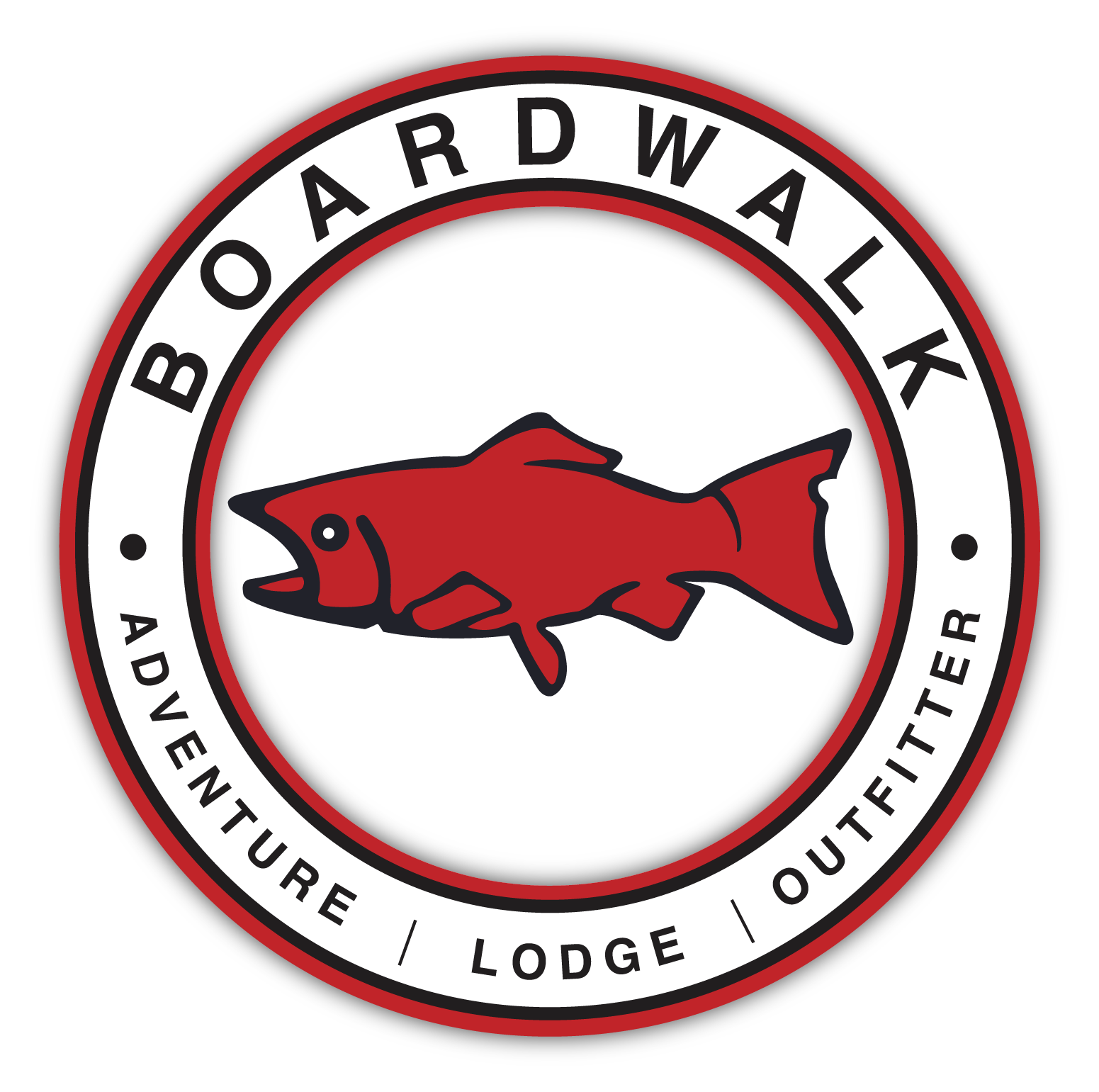
Support
- Policies
- Contact
- Blog
- Frequently Asked Questions
- Why Boardwalk Lodge?
- What's the Orvis Endorsement?
- HR
- Privacy Policy
- Boardwalk Rewards
- Travel/Booking Agent Program
- Pro Fish Partners
- Promotions
- Bring Home Fish Guarantee
- Corporate Fishing Trip
- Family Reunion Fishing Trip
- Military Discount
- Responder Discount
- Teacher Discount
Boardwalk Lodge Supports
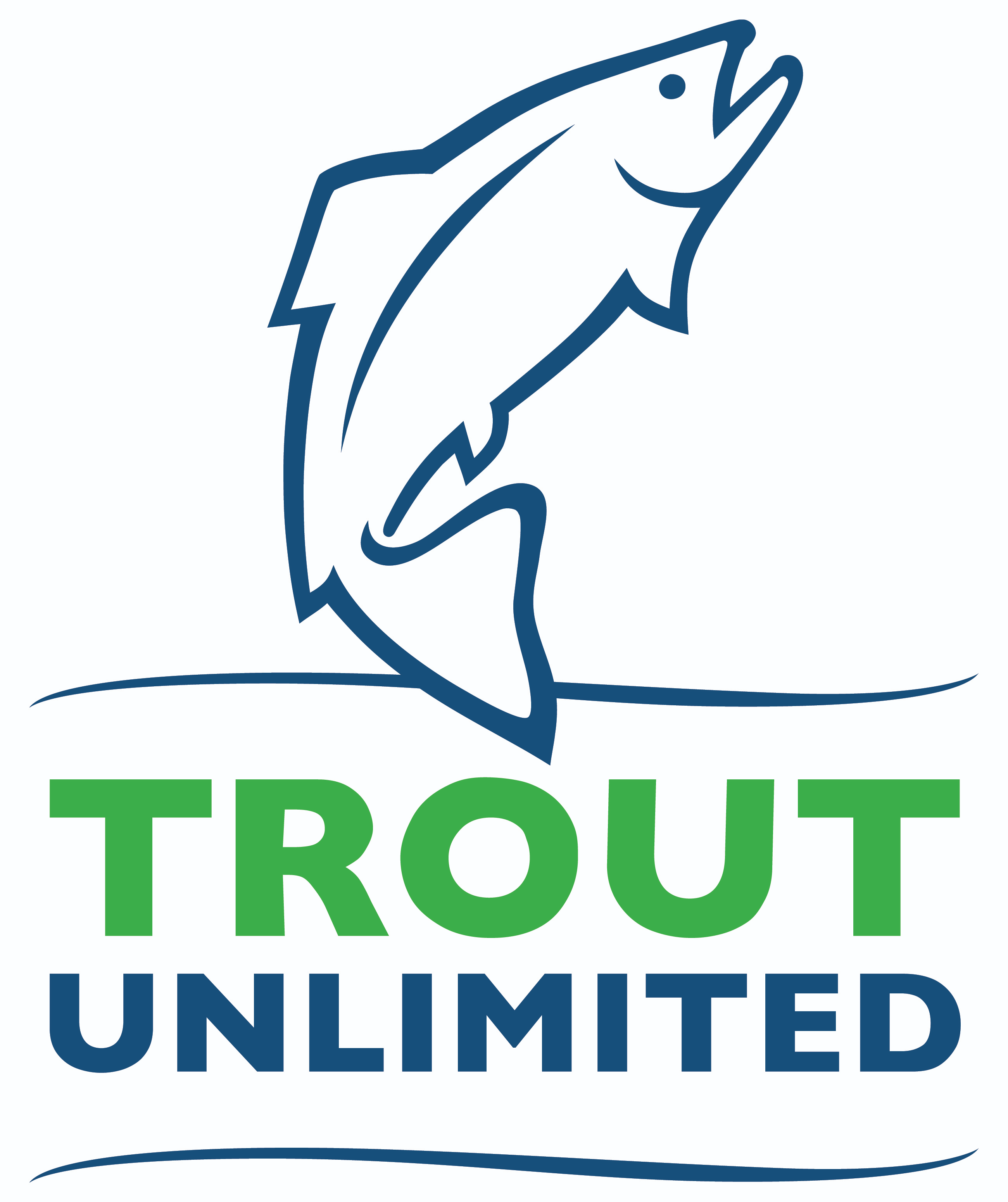



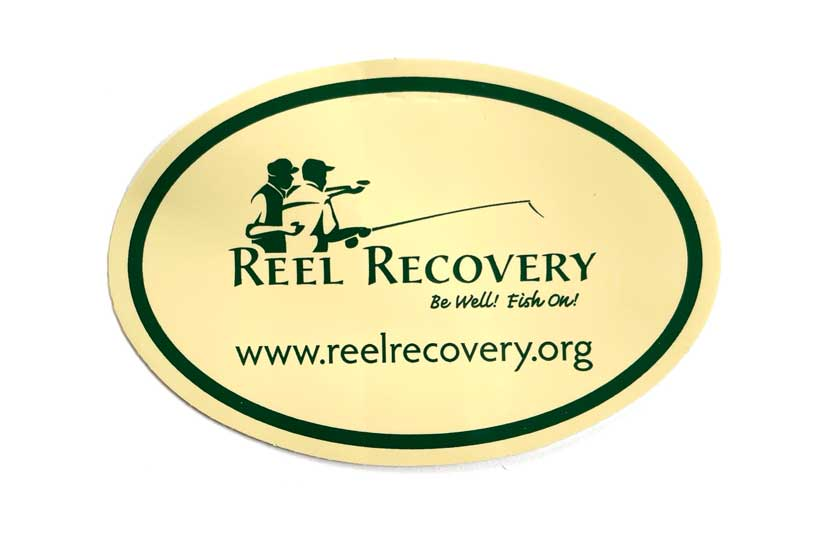
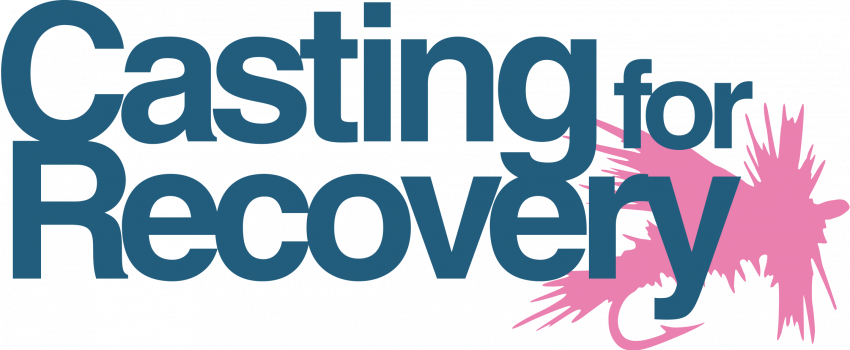
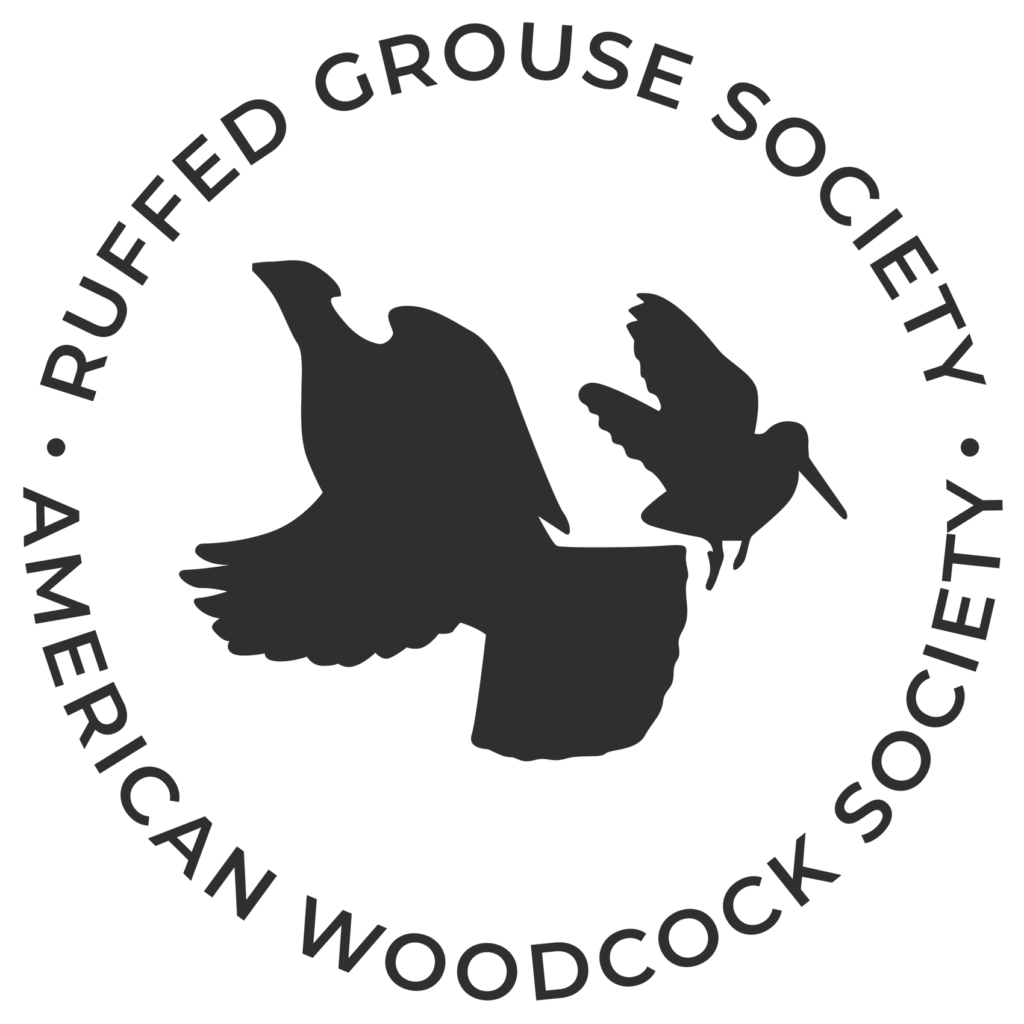
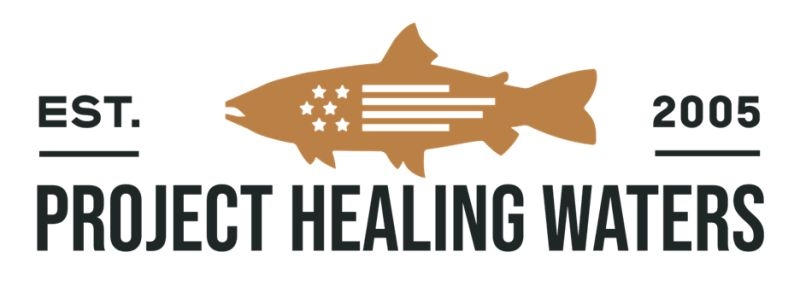
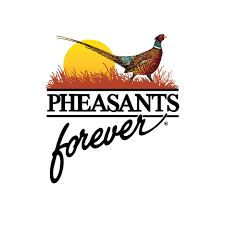
Our Partners
